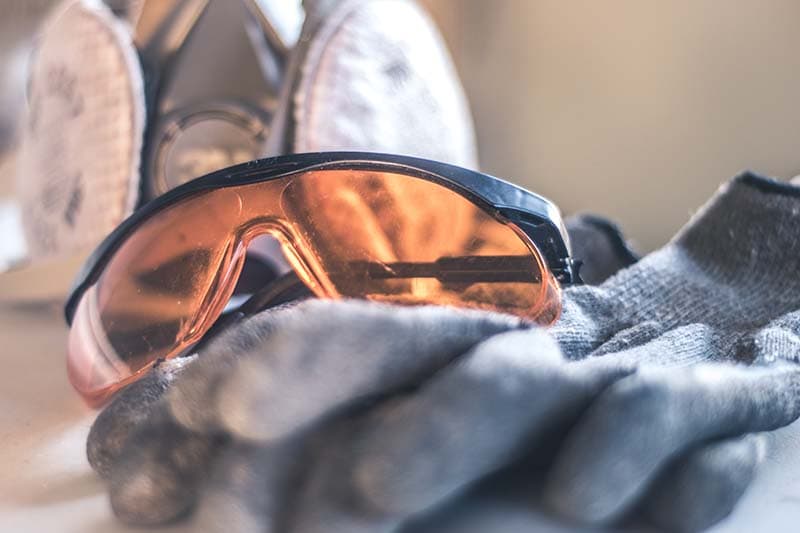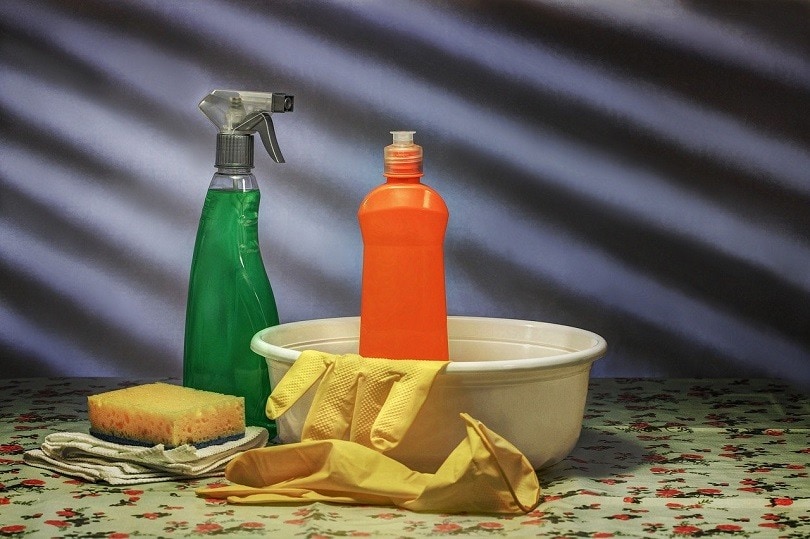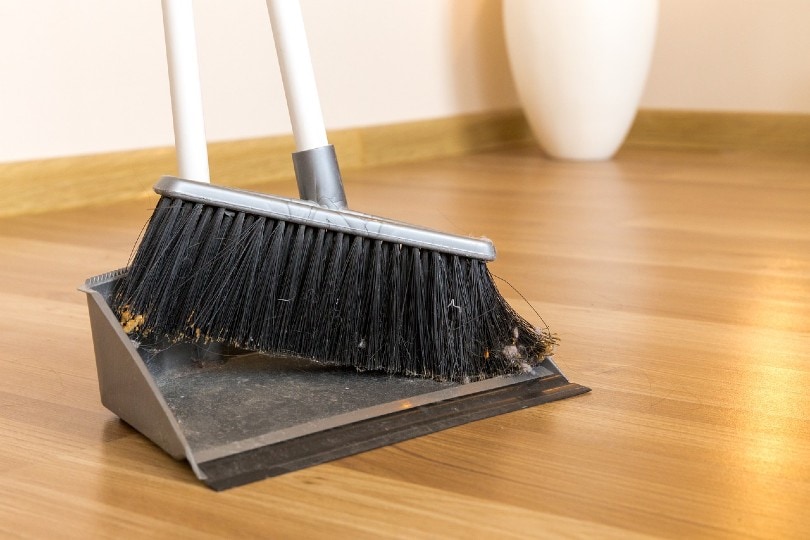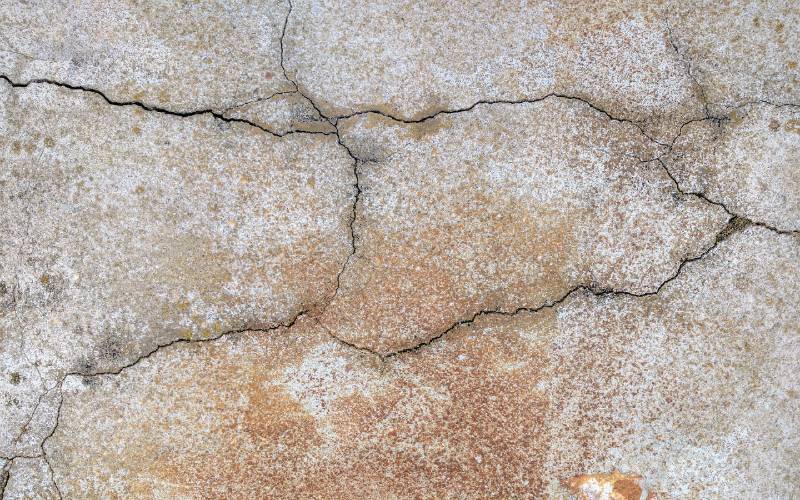Does WD-40 Stain Concrete? 5 Ways to Remove It
-
Pete Ortiz
- Last updated:

WD-40 is an abbreviation that stands for “Water Displacement, 40th Formula.” And if you’re wondering why a brand would give a product such a strange name, it’s because they took it straight out of their chemist’s laboratory book.
WD-40 can be anything you want. You could use it as a moisture displacer, penetrant, solvent, rust preventive, or lubricant. Most of us prefer applying it as a lubricant, seeing as it often exudes properties that are relatively similar to those observed in oil.
But does it stain concrete the same way oil does?
Yes, WD-40 does stain concrete. But the stain won’t be conspicuous right off the bat. You’ll still be able to see it if you spill it on concentrate but in a very light yellowish-brown shade. The spillage will slowly penetrate the concrete, settle at the bottom, then rise back to the surface over time. That’s when you’ll see a more visible stain.
How Can You Remove The WD-40 Stain from Concrete?
Cleaning this type of stain from any porous surface, let alone concrete, is just as difficult as getting rid of an oil stain. At the moment, the only advantage you have is your mental preparation. Knowing beforehand what’s required of you makes the whole process a lot easier.
- Cellulose thinner, kerosene, or acetone
- Sawdust or cat litter
- A pair of gloves, and a mask
- Hose
- Bristle Brush
- Dustpan
- Broomstick
- Old rags, or paper towels
- Detergent
The 5 Ways to Remove WD-40 Stains on Concrete
1. Put On Your Personal Protective Gear
To be clear, we’re not trying to imply that WD-40 is hazardous. All we’re saying is, prevention is better than cure, and it’s better to be safe than sorry. For quite a while, the WD-40 brand kept the original ingredients used in production a secret. But thanks to the US Material Safety Data Sheet, we now have all the information we need.
Petroleum distillates are part of that list, meaning we’re dealing with a compound that has a significant percentage of hydrocarbons1 in it. When or if inhaled, hydrocarbons can cause neurological problems, lung irritation, coughing2, etc.

2. Wipe the Spillage
You shouldn’t allow the liquid to sit on concrete for too long. Remember, it’s one of the most proficient penetrants currently being sold in the market. Quickly grab an old piece of cloth, rag, or paper towel, and place it over the affected area. Don’t remove it immediately, as we need to give it a little more time to absorb most of that solvent.
3. Apply Detergent
Applying a detergent over the affected area is essential because the goal is to completely get rid of the oily stains left behind. And it has to be a petroleum-based liquid detergent that’s specifically designed to break down grease and oil. Mix some of it with water, apply over the area, and then start scrubbing.
Don’t make the mistake of using a wired brush, as that could compromise the smoothness of the concrete surface. Go for something softer, like a bristle brush.

4. Apply an Absorbent Material
After you’re done scrubbing, hose off that affected area and then give it some time to dry—20 to 30 minutes. If the detergent wasn’t strong enough to completely remove the stain, you’ll have to employ the services of absorbent material—we prefer using kitty litter or sawdust.
Evenly sprinkle some of that sawdust over that whole area, make sure it’s well covered, and then create a thick paste by adding a few drops of your preferred brand of cellulose thinner. If you don’t have any thinner, you can use kerosene, acetone, or any other effective solvent that you can easily access.
By the way, the three solvents that we’ve just listed often evaporate quickly once exposed to the air. So, you’ll have to work very fast.
Again, evenly spread the mixture before covering it using a tarp and letting it sit. Any WD-40 that managed to seep through the concrete will be pulled right back up and soaked into the litter or sawdust.
5. Remove the Absorbent Material
The stain should be gone after 2–3 hours. So once that time elapses, use the broomstick and dustpan to remove the sawdust or litter, then safely dispose of them. If for some reason, you can still see traces of the WD-40 stain, repeat the whole process one more time. But this time around, give your treated absorbent material adequate time to completely dry before removing it.

Frequently Asked Questions (FAQs)
Can WD-40 Be Used as a Substitute Stain Remover?
Ironically, yes. This solvent is one of the most preferred stain removers in messy situations that involve any form of adhesive. It will help you get rid of the gum that is stuck on the carpet, duct tape, gorilla tape, you name them. Just apply a small amount on the affected area, let it sit for 20 to 30 minutes, and then use a soft piece of cloth to rub it off.
You’re strongly advised against applying WD-40 on satin, silk, or any other fabric that looks delicate. Also, seeing as it normally leaves a strong chemical odor behind, you have to immediately wash whatever you used it on.
Parents with kids who love drawing on brick walls using crayons are also encouraged to give this solvent a shot. It’s effective at dissolving or breaking down such stains, hence making them easier to wipe off.
Can WD-40 Remove Rust from Concrete?
WD-40 will definitely help you get rid of any rust from concrete. Even if the rust has somehow managed to penetrate the concrete’s porous surface, WD-40 will still get to it. The only problem is that you might have to use an entire bottle of the product. The scrubbing bit of the process is also not going to be fun.
Don’t use a wired brush, though. You’ll be tempted, thinking it will help you eliminate the stains faster, but no. For this particular project, your old toothbrush will suffice.

Does WD-40 Contain any Toxic Stoddard Solvent?
A Stoddard solvent is a byproduct of refined crude oil. And that means it’s usually synthetic and organic in nature. For generations, people have assumed that all forms of mineral spirits contained in WD-40 are a Stoddard solvent, but that’s not true.
The truth is, that the spirits are refined and taken through a purification process that enables them to meet today’s regulatory and safety standards. If WD-40 had the Stoddard solvent in its purest form, users would be complaining about throat irritation, headaches, or dizziness every time they apply it.
Conclusion
WD-40 stains can be stubborn if you let them sit for too long. But the good news is, it’s never permanent. Even if the stain has been around for several years, it will eventually come off the concrete, and WD-40 can certainly help you achieve this.
See also:
Featured Image Credit: Benedek Alpar, Shutterstock
Contents


